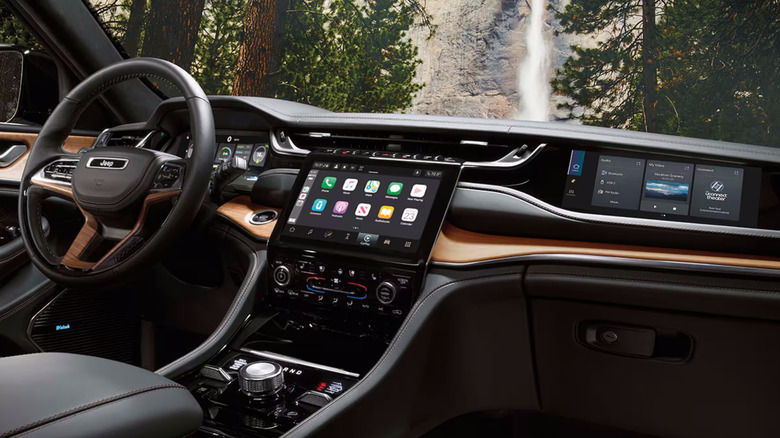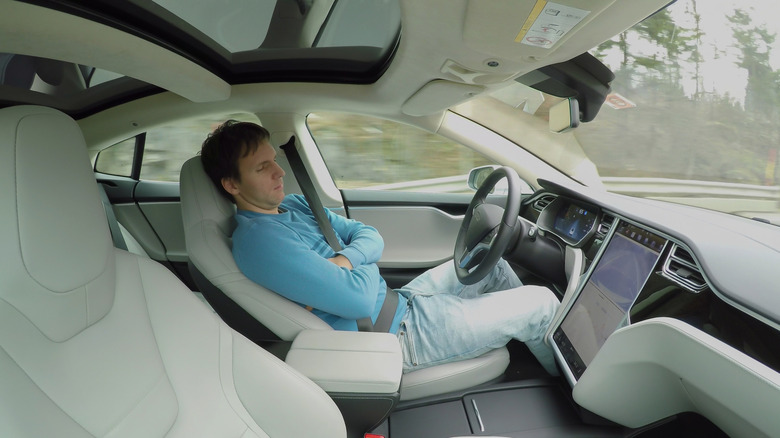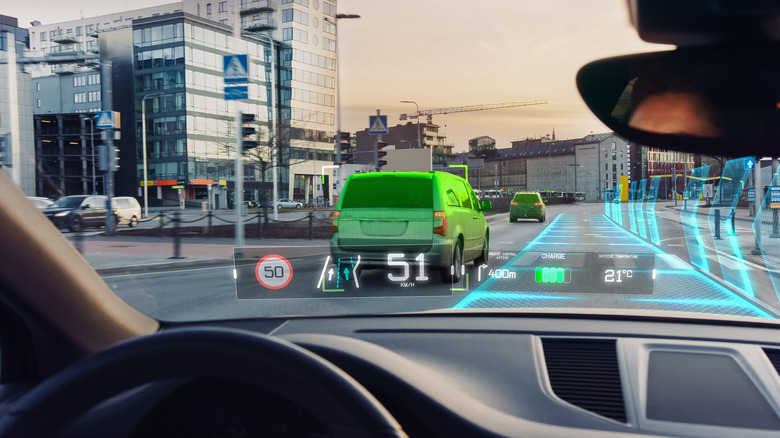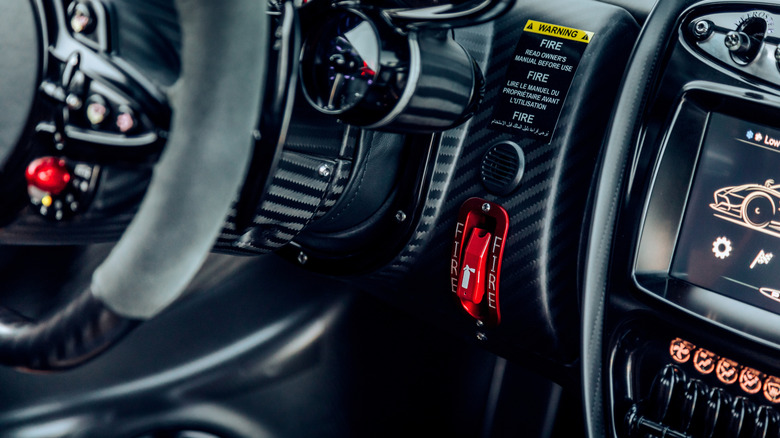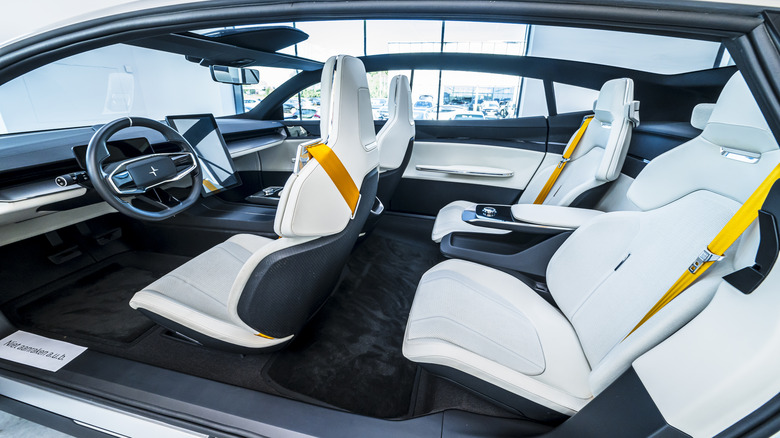5 Non-Existent Car Features We Wish Were A Reality
If you put a car salesperson from any era into a time machine and send them 30 years in either direction, they'd likely end up scratching their heads with puzzlement at what they saw. With each human generation have come advances in automotive technology that made our parents' and grandparents' cars far different from the ones we drive. For example, fuel injection gradually replaced the carburetor as the way gas or diesel fuel is delivered to the cylinders, and gas direct injection has in turn taken over for older throttle body and multi-port fuel injection systems.
The cassette tape, eight-track, and compact disc players that some of us older drivers had in our first cars have now almost completely given way to Apple CarPlay and Android Auto smartphone integration, although there is probably more innovation to come on this front. I have driven cars made from 1964 through 2018, and am using my experience with more than a half-century of automotive technology to project where we might be when our grandchildren get their licenses. Read on to find out what features aren't currently available in production cars, but might be on option sheets in the late 21st century.
Fully autonomous driving could and should be perfected soon
The idea of a self-driving vehicle dates back farther than you probably think; to more than 500 years ago, when Leonardo Da Vinci designed a cart that was propelled by springs and could be programmed to follow a set path. General Motors explored the possibility of self-driving cars at the 1939 World's Fair, and developed radio-controlled prototypes along with RCA in the 1950s. Automated driving systems evolved along with camera, light detection and ranging (LIDAR), and computer technology later in the century, and Carnegie Mellon University's Navlab 5 crossed the country in 1995, albeit with two researchers handling the acceleration and braking.
Modern autonomous driving systems are classified using a five-level system, but level four robotaxis in three Western U.S. cities are the only cars currently operating beyond level two. Autonomous driving systems are racking up more miles of on-the-road testing, becoming more sophisticated, and gaining public confidence, and we should expect to see them in more vehicles. As this happens, automakers will be able to design and implement more capable systems. This should soon bring us to the point where we will be able to confidently use level five autonomous driving systems for our daily commutes while we sip coffee and catch up on work, online shopping, and phone calls.
Heads-up displays should be made to be less distracting and more useful
Heads-up displays were first used in World War II aircraft to help pilots monitor instruments while keeping their eyes on the sky ahead, and General Motors began entertaining the idea of using the technology in cars in the mid-60s. The HUD was slow in development, though, and it wasn't until 1988 that GM produced 50 Indy Pace Car edition Cutlass Supremes with the ability to project speedometer information and turn signal indicators onto the inside of the windshield. HUDs are now available in models as mainstream as the Toyota Camry, Ram 1500 pickup, and 2023 Honda Accord Hybrid in EX-L trim. Luxury automakers like Audi and Mercedes-Benz have come as far as offering augmented reality features in their heads-up displays, but introducing added layers of information into a driver's line of sight can be as dangerous as it can be helpful.
We'd like to see a responsible application of this technology, where the focus is on safety and not simply on convenience.Instead of bombarding our field of vision with vehicle telemetry information and reviews on that restaurant up ahead, heads-up displays should be designed to signal the presence of hazardous road conditions like black ice and crosswinds, giving us a chance to slow down in anticipation of these dangers.
And as more vehicles adopt autonomous driving systems, the heads-up displays in our cars could be designed to anticipate the moves of other vehicles on the road, and indicating where they're going on our heads-up display, perhaps with a color-coded ghost car.
Automated fire suppression systems could save hundreds of lives a year
The next item on our wish list is available in a different form in one production car, although only 40 were made, and they sold for $3.4 million each. As pictured above, the Pagani Huayra BC roadster had a fire suppression system that the driver could activate in case they crashed their multi-million dollar hypercar. Fire suppression systems have been in use in auto racing since the 1960s, and are now mandatory in NASCAR, Formula 1, IndyCar, IMSA, and sprint car racing. Many of these systems have been automated so that they no longer require driver input, which at times is difficult or impossible due to injury from a crash.
According to Statista, more than 9,200 people died in car fires between 2000 and 2021 in the United States alone. Automated fire suppression systems in standard production cars could save hundreds of lives each year. The additional cost for these systems would be substantial, potentially amounting to thousands of dollars, and would likely be passed on to buyers. If you'll allow us the use of a cliche here, though, you can't put a price on human life. Car prices have been climbing steadily for years anyway. Cox Automotive reports that the average American paid $48,451 for a new car in 2023, up from about $30,000 in 2012. Most buyers would probably be willing to see some of their money go into making their cars safer to drive, instead of toward more needless electronic geegaws.
The breakaway safety cell is another race-bred idea that is ready for market
Another racing-inspired safety development could potentially prevent some accident-related deaths and injuries, but would absolutely change much of how we deal with the aftermath of major collisions. Production cars are currently engineered to have crumple zones, which absorb the energy of an impact so it's not transferred to the passenger compartment. Unfortunately for car owners, this often results in major body and/or frame damage, requiring many cars to be declared a total loss by insurance companies after an accident.
IndyCar and Formula 1 race cars are designed with a protective safety cell around the driver and body components that are designed to break apart in the event of a wreck. These crashes, like Mike Conway's above incident from the 2010 Indy 500, can produce a spectacular amount of debris while still protecting the driver (Conway recovered from the broken bones in his leg and back in less than eight months). In less devastating crashes, body components can often be quickly replaced in the pits or team garage.
At the 2020 Formula 1 Hungarian Grand Prix, Red Bull team mechanics replaced the front wing and some suspension components on Max Verstappen's car in less than 20 minutes while he sat on the starting grid after a crash on the formation lap. Instead of the current situation — where passenger cars are totaled after collisions at moderate speeds — they should be designed with sturdy passenger compartments and lightweight body panels that break apart in a collision. If the standard becomes to rebuild crashed cars around a protective core instead of scrapping crumpled hunks of steel, the environmental and financial benefits would be substantial.
Smart seats could make every ride more comfortable
Cars today are loaded with sensors. Some detect traffic in our blind spots or when it's raining, and others can see pedestrians or bicyclists and apply the brakes for us. The on-board diagnostics system that regulates our fuel and emissions systems is loaded with sensors, and many cars also have tire pressure monitors to feed that information to the dashboard. Many cars have heated, cooled, and massaging seats, but these capabilities are generally linked to a vehicle's climate control system or operated manually. There's an opportunity here for a forward-thinking automaker to plant some temperature and pressure sensors in the seats of its vehicles that will respond to each person's shape, weight, and body temperature in a way that delivers optimal comfort without the need to press a button or tap a touchscreen.
Motors inside seats could adjust height, angles, lumbar and thigh support, as well as headrest and bolster positions. Our car seats should also be able to change firmness and position as our bodies contort during long trips, especially considering how much computing power is already present in most modern cars. The closest thing to a smart seat in production cars today is the Mercedes-Benz MBUX system, which adjusts the driver's seat and steering wheel according to height, but the driver must enter that information via the car's infotainment screen.
